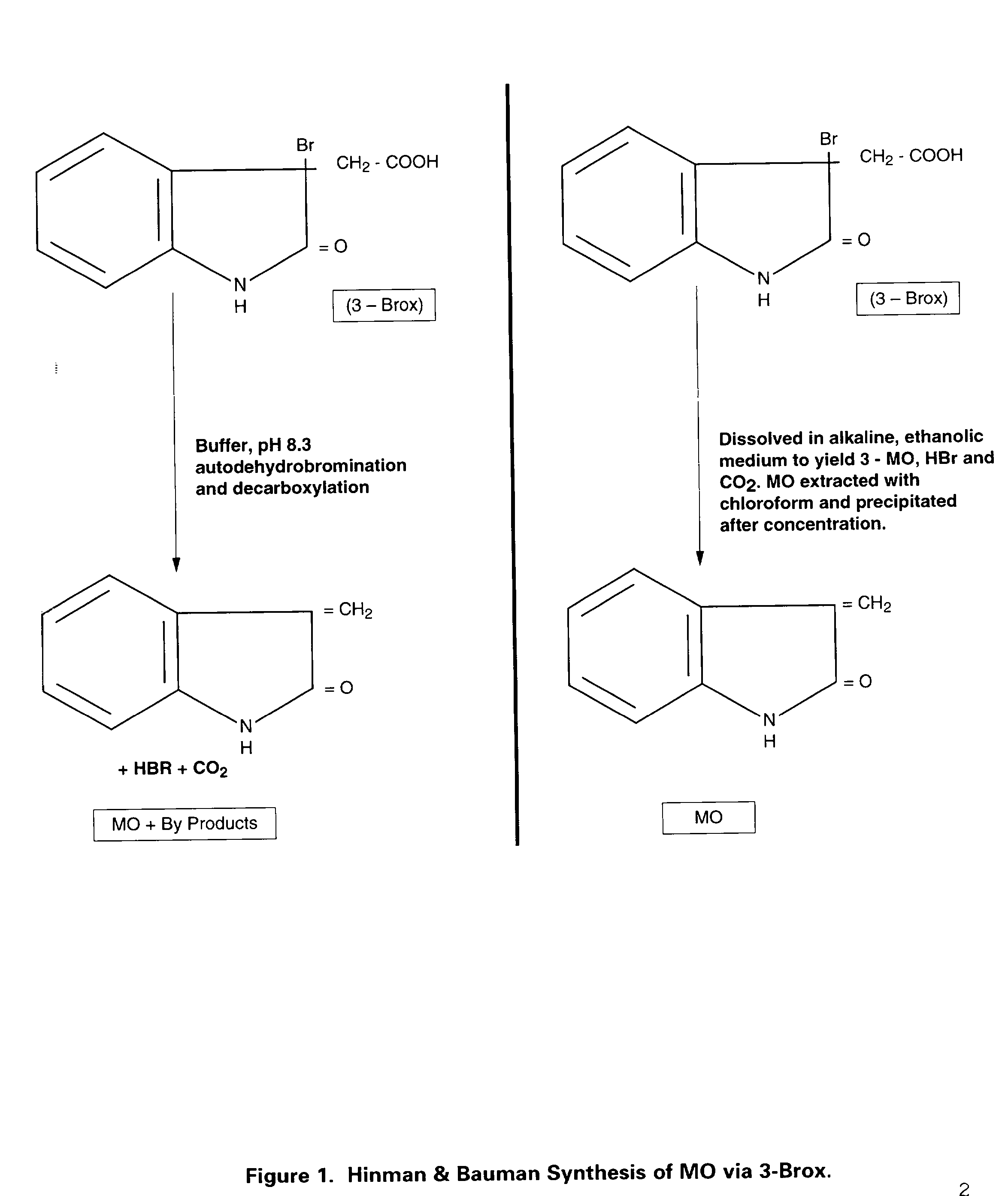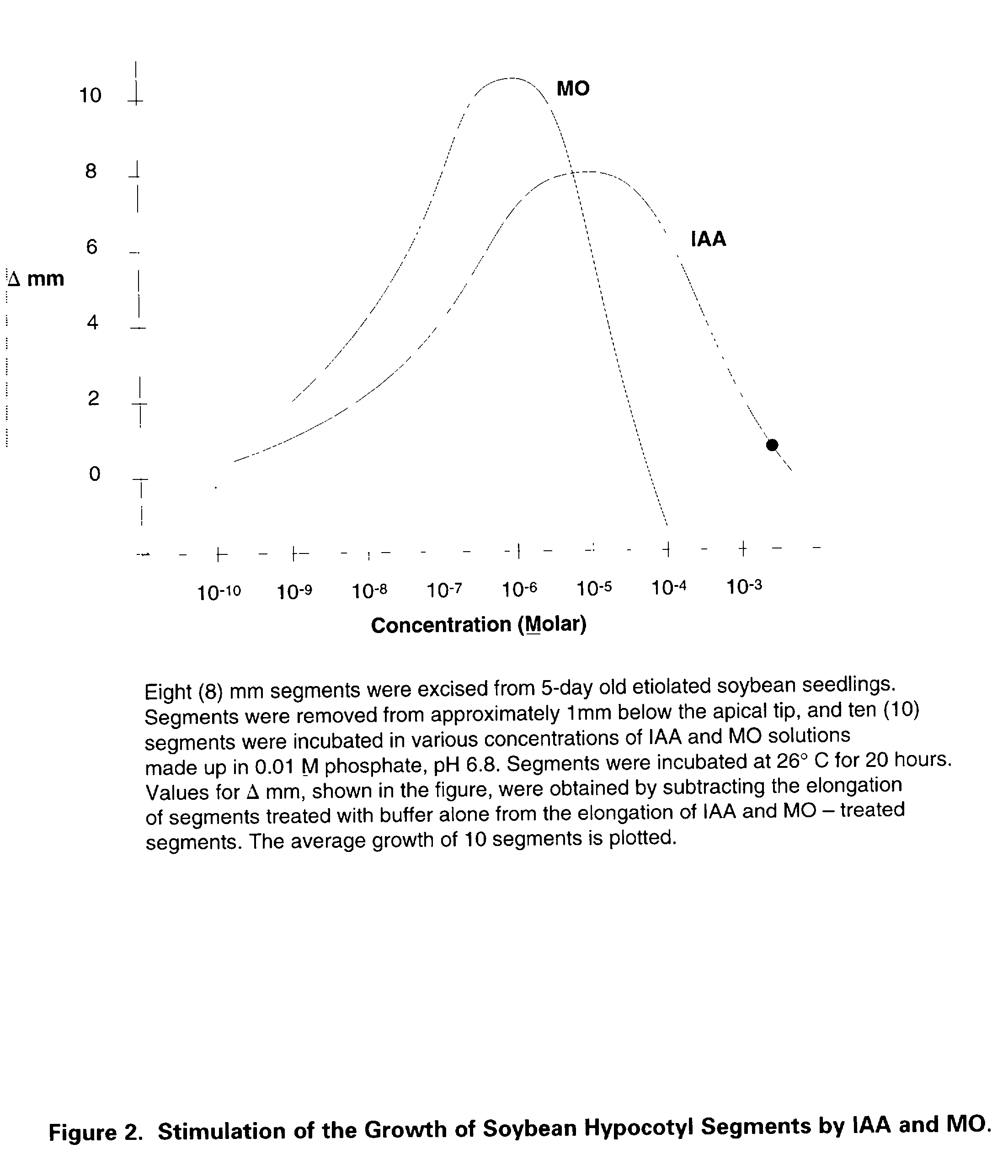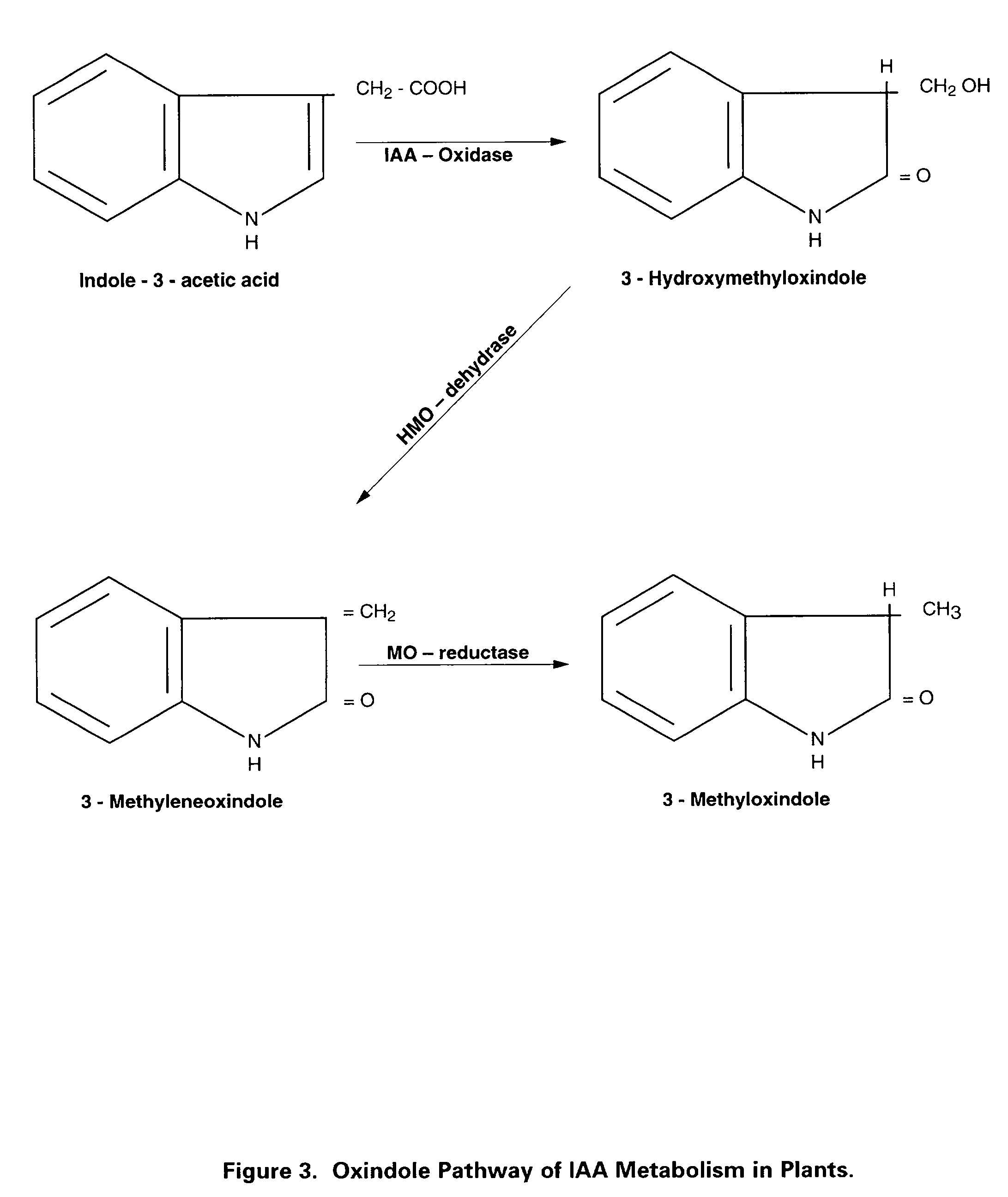Preparation of biologically active 3-methyleneoxindole and definition of its application in stimulation of plant growth and tissue repair
a technology of methyleneoxindole and methyleneoxindole, which is applied in the field of plant physiology, can solve the problems of short activity period, unstable compound iaa, and difficult use of iaa in stimulating growth, and achieves rapid metabolism and reduces the rejection of scion to root stock
- Summary
- Abstract
- Description
- Claims
- Application Information
AI Technical Summary
Benefits of technology
Problems solved by technology
Method used
Image
Examples
Embodiment Construction
. Reference publication of R. L. Hinman and C. P Bauman. Reactions of N-Bromosuccinimide and Indoles. A Simple Synthesis of 3-Bromoxindoles. Jour. Org. Chem. 29: 1206 (1964) and R. L. Hinman and C. P. Bauman. Reactions of 3-Bromoxindoles. The Synthesis of 3-Methyleneoxindole. Jour. Org. Chem. 29: 2431 (1964).
OBJECTS AND ADVANTAGES
[0018] Accordingly, several objects and advantages of my invention are the following.
[0019] Use of MO and its solutions prepared by novel methods for stimulation of root formation in plant cuttings and as replacement for IAA or synthetic auxins in plant tissue culture. When tested against IAA, napthaleneacetic acid and indolebutyric acid, MO produced more profuse roots in a much shorter time and at significantly lower concentrations in cuttings obtained from various plants including tomatoes, begonias, African violets, roses, soybeans and peas. Refer to FIG. 2 for typical response of cuttings to test compounds and Table I for data summary.
[0020] FIG. 2. Sti...
PUM
| Property | Measurement | Unit |
|---|---|---|
| pH | aaaaa | aaaaa |
| molar concentrations | aaaaa | aaaaa |
| diameter | aaaaa | aaaaa |
Abstract
Description
Claims
Application Information
 Login to View More
Login to View More - R&D
- Intellectual Property
- Life Sciences
- Materials
- Tech Scout
- Unparalleled Data Quality
- Higher Quality Content
- 60% Fewer Hallucinations
Browse by: Latest US Patents, China's latest patents, Technical Efficacy Thesaurus, Application Domain, Technology Topic, Popular Technical Reports.
© 2025 PatSnap. All rights reserved.Legal|Privacy policy|Modern Slavery Act Transparency Statement|Sitemap|About US| Contact US: help@patsnap.com



